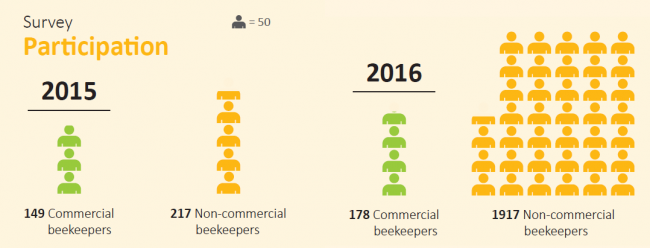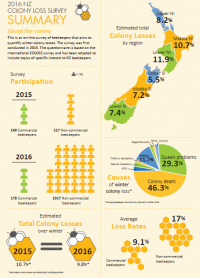Summary of results - 2016
In a nutshell...
- Survey participation increased 5-fold.
- Estimated colony losses for winter 2016 were 9.8%. This is statistically indistinguishable from 2015 estimates.
- A higher share of hives was lost in the North Island compared to the South Island.
- Average loss rates are higher for non-commercial beekeepers than commercial; however, there is wide variation in individual loss rates.
- Colony death, queen problems and wasps accounted for 87.3% of winter colony losses in 2016.
- Hive numbers continue to grow. Evidence competition for apiary sites is growing: 16% of large beekeepers reported that they had sites overtaken or overcrowded or that their apiary sites had reduced floral resources.
- Most colonies are used for honey production only. Few are used for pollination only. Some are used for both.
 Reporting by Region and Operation
" class="Centre-align caption" width="650" height="248 "/>
Reporting by Region and Operation
" class="Centre-align caption" width="650" height="248 "/>






